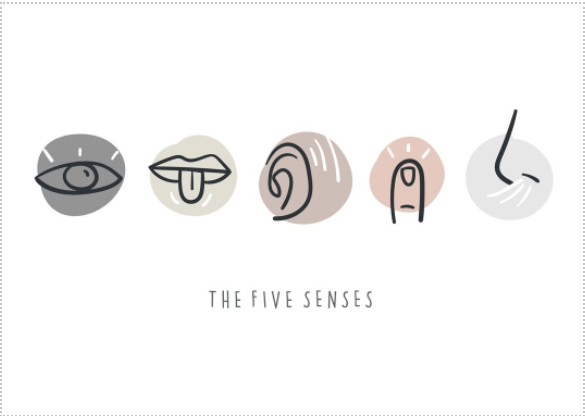The benefits of live music and the ‘goosebump’ effect
Live music has the power to bring people together, be it in a small club
Home » How engaging the senses can supercharge business success
We are proud to be working with Dr. Julia Jones (otherwise known as ‘Dr. Rock’) who is our insightful Neuroscientist.
In this fascinating blog, Dr. Rock advises how business owners can engage employees’ and customers’ five main senses (particularly sound, in the form of music) to drive greater success. The science could well inform your strategy.

Dr. Julia Jones (AKA ‘Dr Rock’) – Neuroscientist working with PPL PRS
Dr Julia Jones aka Dr. Rock, has spent the past 25 years studying and applying music neuroscience, showing how music can transform lives and businesses across many different sectors.
She prescribes music as a functional tool. The basic neuroscience principles work in any setting whether its in elite sport, dementia care, workplace wellbeing or consumer marketing.
Julia published her first book in 2019. It’s called The Music Diet and shows how consuming music in some form as part of our daily routines can have multiple beneficial effects on wellbeing at home and at work.
You can read the full biography of Dr Rock here.
Our brain spends a lifetime processing information from our external surroundings to determine whether we’re safe or in a potentially threatening moment. These neural systems are hugely sophisticated and rely on masses of data being received rapidly from all our senses.
For the past 30 years I’ve been particularly fascinated with the way our brain uses sound and how as humans we’ve managed to use this auditory input channel to produce desired behavioural responses — including in business environments.
Music and sound provide a 360-degree threat detection system that was once vital to the survival of our ancient human ancestors. If the danger was approaching from a direction that was out of vision, our ears gave us early warning so we could initiate a swift response.

Credit: Maksim Kabakou
Sound also works in partnership with several other senses to help the brain understand what’s going on in our world. This is how we experience life, and the emotions that determine how enjoyable our existence is.
These sensory input channels to the brain can also be used to help produce optimal environments in workplaces — from offices to shop floors to restaurants. Specific content can be fed through these sensory channels to help the brains of employees and customers feel a certain way.
PPL PRS’ recent survey of 2,101 respondents revealed that 94% of UK adults recognise that different types of music can affect their mood in different ways (63% said ‘yes, definitely’ and 31% said ‘yes, sometimes’).
When it comes to shopping or enjoying time in a business like a salon or restaurant, two-thirds (66%) of customers say music influences what they buy (with 27% answering “definitely” and 39% “probably”). At home, 89% of people use certain types of music for specific purposes such as exercising and cooking (48% said ‘all the time’ and 41% said ‘yes, sometimes’).
The research showcases the power of music. And, scientifically speaking, how our ears can produce particularly profound and immediate neuromodulation effects — with the power to use the sound vibrations they receive to trigger key brain circuits and neurochemicals involved in mood. The ears are a superb entry point to the brain.
As humans we instinctively know this happens. We know when it’s easy to feel a bit awkward and tense in a silent waiting room or restaurant but contrastingly may feel energised by music in the gym, for example.
This may account for why over two-thirds (67%) of respondents to the PPL PRS survey admitted to leaving a venue after realising no songs were playing — a scenario most common in pubs, where one in five (20%) revellers have chosen the door over a drink after a silent reception.
When music is used well and paired with other sensory stimuli such as light, colour and scent the resulting effects can be amplified. In recent years there’s been increasing scientific interest in the pairing of the ears and eyes — particularly the way that ear drums also respond to eye movement.
Scent also makes a powerful addition to the multi-sensory cocktail with its ability to reactivate powerful memories from your past.

Given that we experience these multi-sensory neural stimulations throughout life, you’d expect it to be simple to get right in workspaces. But it’s often overlooked or sometimes tackled in an unsuitable way. Even companies which have already made great steps in their multi-sensory activations are keen to refine their approaches to further improve the results.
Music is the glue that can bind all your other sensory stimuli such as colour, light and scent. It surrounds employees and customers; even when they aren’t looking at the speakers, they passively absorb it. So, if you’re focusing on creating an immersive environment that produces a specific effect (be it comfort, motivation or joy) then the blend of sound, lighting, scent, and temperature could give you the marginal gain you’re looking for.
Start-ups, larger companies and employers alike can gain an immense advantage by using multi-sensory strategies in the design of their workspaces. It could allow your workforce to feel calm, safe and productive. If your business is customer-facing, it can immediately help clientele to decide how they perceive your brand.
The PPL PRS survey asked the nation to rank the senses from 1-5 based on how important they are in creating a positive working environment. Sound (specifically ‘music’) and sight (namely ‘colour’) were voted the most powerful for all the right reasons.
For office-based employees, music has the feel-good factor (32%). People working in public venues like a shop, salon or restaurant also favour a good tune (21%) second only to colours around them (41%).
Music is associated with positivity because it can alleviate anxiety (which Marianne Rizkallah, Music Therapist working on behalf of PPL PRS articulates brilliantly) and supercharge employee productivity.
Your business will of course require TheMusicLicence, then it’s worth considering your soundtrack. There are three key factors to consider here.
Especially if your business is customer-facing, like a shop.
2. What will the people who spend time there (employees and/or customers) wish to listen to?
Should the music feature lyrics or be instrumental? Asking team members to feed songs into a playlist could be a starting point, making them feel involved, fostering collaboration and boosting morale when they hear their favourite track. Happy employees are engaged employees.
Foremost, consider the tasks at hand. For example, an employee with a repetitive workload might appreciate catchy lyrics, a shop assistant might value an upbeat tempo and office worker needing to focus could benefit from ambient noise. Interestingly, the PPL PRS survey found that ‘pop’ was the genre that makes those surveyed feel more productive while tackling their to-do list (43%).
Beyond sound, an office-based business owner may wish to consider good lighting (to save employees squinting at computer screens and avoid lethargy). Space – like meeting rooms and a generous desk area to write – are also valuable.
A retail store owner may wish to spotlight their key products which may, again, lead to considering the correct lighting and layout but also creating an inviting atmosphere through enticing scents, to draw their customer in the door to the products. There’s no point in having a successful layout and lighting if you can’t get your target audience through the door!
Some brands have dug deep into this science over the past decade or so, exploring ways of bringing this multi-sensory approach into their businesses. Well-known cosmetics retailers regularly offer scented, immersive bath products so fans can create a sanctuary at home.
The stores are filled with fragrance that even reaches external passers-by, likely aiming to entice them. But they also pay deep attention to the sounds in the store, lighting (which is soft and warm) and layout (it’s spacious, with stands lining the sides). The retailers also take this science into its spas, appealing to all the senses to elicit the greatest experience and tempt guests to return.
Coffee retailers like Caffe Nero help to ensure the noses of their customers receive a caffeine-infused aromatic welcome. This, in turn, tickles their tastebuds – because taste and smell are closely interlinked senses. Plus, the lighting and curated music soundtracks in these establishments create a sense of comfort and safety even when the stores are busy.
The beauty of cafes is that they are relaxing environments but also abuzz with ambient noise – from music, to whirring machines and other customers – so a popular choice to work remotely in, too.
Whether you’re a large company at an advanced stage of multi-sensory strategic thinking, or a start-up in the early stage of figuring all this out, tapping into basic biology can help to power your business and create an improved experience for all.

Dr Julia Jones (AKA ‘Dr Rock’) is PPL PRS’ Smart Wellness Coach. She advocates that music has a powerful positive effect on physical and mental wellness, allowing a person to feel good in body and mind. She raises awareness of the impact of music on health conditions related to the brain development, menopause and more. Her recent focus is the gut-brain axis, working with Channel 4’s Steph McGovern to open a wellness bar called ‘Neuron Wellness’.
After 25 years studying and applying the practices she’s learned from her music neuroscience research (PhD, MSc, MBA, & Bachelor's degree), Dr Rock advises Olympic squads through to business leaders on how listening to music can improve health. She’s a three-time published author ambitious to transform public health and help people live longer, healthier lives through simple, smart wellness habits.
Live music has the power to bring people together, be it in a small club
Does it ever feel like your life is on hold? A recent study conducted by
The end of a year is often a time for reflecting. Thinking back over the
Set up a new music licence for your business or organisation.
Get TheMusicLicence
